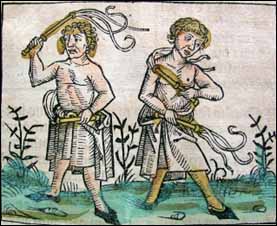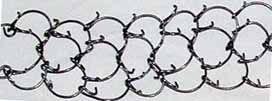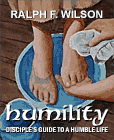Free E-Mail
Bible Studies
Beginning the Journey (for new Christians). en Español
Old Testament
Abraham
Jacob
Moses
Joshua
Gideon
David, Life of
Elijah
Psalms
Solomon
Songs of Ascent (Ps 120-135)
Isaiah
Advent/Messianic Scriptures
Daniel
Rebuild & Renew: Post-Exilic Books
Gospels
Christmas Incarnation
(Mt, Lk)
Sermon on the Mount
(Mt 5-7)
Mark
Luke's
Gospel
John's Gospel
7 Last Words of Christ
Parables
Jesus and the Kingdom
Resurrection
Apostle Peter
Acts
The Early Church
(Acts 1-12)
Apostle Paul
(Acts 12-28)
Paul's Epistles
Christ Powered Life (Rom 5-8)
1 Corinthians
2 Corinthians
Galatians
Ephesians
Vision for Church
(Eph)
Philippians
Colossians,
Philemon
1
& 2 Thessalonians
1 & 2 Timothy,
Titus
General Epistles
Hebrews
James
1 Peter
2 Peter, Jude
1, 2, and 3 John
Revelation
Revelation
Conquering Lamb of Revelation
Topical
Glorious Kingdom, The
Grace
Great Prayers
Holy Spirit, Disciple's Guide
Humility
Lamb of God
Listening for God's Voice
Lord's Supper
Names of God
Names of Jesus
Christian Art
About Us
Podcasts
Contact Us
Dr. Wilson's Books
Donations
Watercolors
Sitemap
 Woodcut of flagellants (Nuremberg Chronicle, by Hartmann Schedel, 1493), CCXVr. |
During the Middle Ages some churchmen went beyond biblical fasting and wearing sackcloth to humble their bodies. They would use whips and clothing to tear their flesh and inflict self-pain. Humbling became humiliation.
We need to pause for a moment to correct one trend that has continued -- self-harm. Throughout history up to our own day we sometimes see self-flagellation or wearing a cilice as a way to "mortify the flesh" (KJV, Romans 8:13, Colossians 3:5). In the Philippines, there is a Good Friday tradition of crawling on rough pavement, self-flagellation, carrying heavy wooden crosses, and even actual crucifixion.382
Forms of self-harm come from a misinterpretation of Paul's statement about the importance of training oneself for the games, which he applies figuratively to the Christian life. Paul makes clear that his training and self-discipline is not without purpose.
 Closeup of a metal chain cilice (sil-EES), an ancient Catholic mortification belt, with inwardly-pointing tines. Source: Wikipedia, GNU Free Documentation License, Version 1.2. |
"26 Therefore I do not run like a man running aimlessly.383 I do not fight384 like a man beating385 the air. 27 No, I beat my body and make it my slave so that after I have preached to others, I myself will not be disqualified for the prize." (2 Corinthians 9:26-27)
However, Paul isn't talking here about self-flagellation as an ascetic practice. The word translated "beat" (NIV), "punish" (NRSV), "keep under" (KJV) is hypōpiazō, literally, "strike under the eye, give a black eye to," used figuratively here to mean, "to put under strict discipline, punish, treat roughly, torment."386
In other words, Paul doesn't spare himself or coddle himself. He compares himself to an unremitting athletic competitor who continues his intense 10-month training period so that he won't be disqualified when it comes time to compete. He isn't easy on himself. He isn't casual about his spiritual life. Bruce explains:
"These vividly figurative words do not denote literal self-flagellation, but describe the moral discipline to which he constantly subjected himself, lest anything else should displace the paramount aim of his life, the proclamation of the gospel. Self-discipline involves a voluntary curtailment of one's rights and liberties, so these ... verses provide a further answer to those who criticized Paul for not availing himself to the full of the freedom to which an apostle was entitled."387
 Paperback, PDF, and Kindle formats |
As I reflect on the practices of self-flagellation, I believe it comes from a defective understanding of grace, since it is often done for penitence. Christ has already forgiven our sins! Hallelujah! Yes, we need to humble ourselves, but Jesus isn't talking about this kind of penitence. He means repentance from sin and forsaking it. All this seems overdone; not biblical Christianity at all.
End Notes
[382] Wikipedia article, "Crucifixion in the Philippines.".
[383] "Run/running aimlessly" (NIV, NRSV), "not as uncertainly" (KJV) is the negative particle with adēlōs, "uncertainly," here, of a race, "not aimlessly," i.e. not as one who has no fixed goal (BDAG 19).
[384] "Fight" (NIV, KJV), "box" (NRSV) is pykteuō, "to fight with fists, box" (BDAG 897).
[385] "Beating/beateth" is derō, originally, "skin, flay," here, "strike, beat, whip," perhaps a reference to unskillful boxers who miss their mark (BDAG 219).
[386] Hypōpiazō, BDAG 1043, 3.
[387] F.F. Bruce, 1 and 2 Corinthians (The New Century Bible Commentary; Eerdmans, 1971), p. 89.
Copyright © 2025, Ralph F. Wilson. <pastor![]() joyfulheart.com> All rights reserved. A single copy of this article is free. Do not put this on a website. See legal, copyright, and reprint information.
joyfulheart.com> All rights reserved. A single copy of this article is free. Do not put this on a website. See legal, copyright, and reprint information.

|

|
In-depth Bible study books
You can purchase one of Dr. Wilson's complete Bible studies in PDF, Kindle, or paperback format -- currently 48 books in the JesusWalk Bible Study Series.
Old Testament- Abraham, Faith of
- Jacob, Life of
- Moses the Reluctant Leader
- Joshua
- Gideon
- David, Life of
- Elijah
- Psalms
- Solomon
- Songs of Ascent (Psalms 120-134)
- Isaiah
- 28 Advent Scriptures (Messianic)
- Daniel
- Rebuild & Renew: Post-Exilic Books
Gospels
- Christmas Incarnation (Mt, Lk)
- Sermon on the Mount (Mt 5-7)
- Luke's Gospel
- John's Gospel
- Seven Last Words of Christ
- Parables
- Jesus and the Kingdom of God
- Resurrection and Easter Faith
- Apostle Peter
Acts
Pauline Epistles
- Romans 5-8 (Christ-Powered Life)
- 1 Corinthians
- 2 Corinthians
- Galatians
- Ephesians
- Philippians
- Colossians, Philemon
- 1 & 2 Thessalonians
- 1 &2 Timothy, Titus
General Epistles
Revelation
Topical
